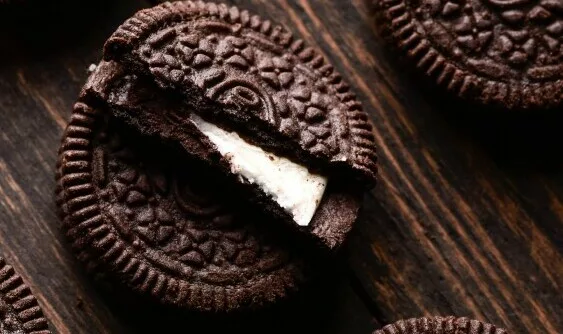
Even though my body was starving for more of a plant-based diet I would find myself having cravings for the things that were not healthy for me. A bag of potato chips (they are made from potatoes), some Oreo cookies or maybe an overindulgence of them. I would even find myself craving some fried chicken.
The point being, I had to learn how to manage cravings. Being armed with the following knowledge made a big difference for me. I believe it will help you too.
Have you ever wondered why you get hit with a sudden urge to snack on something specific? I’m going to explain it to you. Cravings are like your body’s little messengers, telling you it wants or needs something.
Just as you yawn when tired or gulp water when parched, cravings signal your desires. And it’s completely natural.
But here’s what’s tricky. Sometimes these signals get crossed. You might find yourself craving junk food or other items that aren’t exactly lining up with your health goals.
It becomes a tussle to satisfy those urges without going off track. This isn’t just about willpower; it’s understanding what’s at play beneath the surface.
So, imagine a web of images floating around in your mind, each one connected to a different feeling or desire. Now, these aren’t just static pictures; they’re tied to intense pleasures, like the sweet rush of soda or the creamy bliss of ice cream. These vivid images can lead to intense cravings, often directing us towards unhealthy decisions.
That’s why managing cravings is key. The best technique I’ve seen isn’t about fighting cravings as they happen. It’s actually about prevention.
And that means turning down the volume on those vivid mental images associated with unhealthy foods. It’s like putting a filter on them.
This leads us directly into the importance of time since your last exposure to unhealthy foods. The longer it’s been, the less vivid those mental food images are, which means the cravings start losing their grip. Over time, as the memory of that stimulus fades, you’ll find it easier to make healthier choices without feeling like you’re fighting an uphill battle.
Preventing Cravings with Mental Imagery Control

I’m going to walk you through a fascinating concept: controlling the vivid images in your mind to combat cravings on a plant-based diet. You see, cravings are not just whims; they form a canvas of mental pictures that can drive you towards or away from certain foods. By actively managing these images, you can curb the desire for less healthy options. Let’s look at how this works.
Dimming the mental spotlight on unhealthy foods can do wonders. The principle behind this is straightforward: the less vivid an image of a food item is in your mind, the weaker the craving.
For instance, if you’ve ever tried to recall a taste or smell from years ago, you’ll notice it’s less compelling than a recent memory. This is your mind’s version of a ‘fuzzy picture,’ and it’s less likely to trigger a strong craving.
What’s encouraging is that memory and craving intensity have an inverse relationship. As time distances you from your last encounter with an unhealthy food, the memory loses its sharpness.
Your mind becomes less adept at painting a rich sensory picture, making those unhealthy foods less appealing. It’s a clear path to reducing cravings: distance yourself from the exposure, and the cravings will follow suit.
If you’re aiming for a healthier lifestyle and better dietary choices in the long run, mastering mental imagery is a potent tool. Just remember, the journey to a plant-based diet isn’t about immediate perfection; it’s about gradual improvement. Your taste preferences will evolve, making plant-based choices more appealing, and the vividness of unhealthy foods will fade away over time.
Nutritional Strategies to Regulate Appetite
- Introduction to Ghrelin
-
- Ghrelin, often termed the ‘hunger hormone,’ signals the body when it’s time to eat.
- Acts like an internal mealtime alarm clock based on your usual eating schedule.
- Retraining Ghrelin Response
-
- If experiencing hunger at inconvenient times, gradual shifts in eating schedule can help.
- Adjust mealtimes by no more than 45 minutes per day to adapt without excessive stomach grumbling.
- Exercising on an Empty Stomach
-
- Studies suggest it’s acceptable to exercise without pre-workout snacks.
- Listen to your body, avoid pushing it too hard without adequate fuel when necessary.
- Plant-Based Protein for Sustained Fullness
-
- Aim for 15-30 grams of plant-based protein at breakfast.
- Foods like tofu, lentils, or black beans can keep you satisfied throughout the day.
- Omega-3 Powerhouse Team
-
- Chia seeds, walnuts, and seaweed act as regulators of appetite.
- Help prevent overeating and act as dietary bodyguards against cravings.
- Glutamine: Sugar Craving Kryptonite
-
- Glutamine, an amino acid, reduces sugar cravings.
- Foods rich in glutamine include oats, almonds, walnuts, pumpkin seeds, and sunflower seeds.
Making the Right Choices in a Plant-Based Pantry

I’m going to wrap this up by reinforcing the importance of staying vigilant about the foods you include in your plant-based diet. It’s not just about cutting out animal products; it’s also about understanding the nature of plant-based alternatives.
- Remember, not all plant-based foods are created equal. Products claiming to be healthier alternatives can sometimes be wolves in sheep’s clothing, loaded with artificial additives and hidden sugars. They’re designed to last longer on the shelf, but that convenience may come at the expense of your health.
- You’re going to find out about many foods labeled as ‘plant-based’ or ‘vegan’ that are heavily processed with ingredients that do little to promote your well-being. In my opinion, these can be just as detrimental as their non-plant-based counterparts.
- Choose something that resonates with you and aligns with your health goals. Always read labels meticulously and opt for whole, unprocessed foods whenever possible. It’s these choices that will support not just your plant-based diet, but your overall health journey.
- Don’t worry too much about slipping up or facing the occasional craving; it’s a natural part of adjusting to a new way of eating. You can always adjust your approach down the road as you learn more about what works for you.
In conclusion, the path to managing cravings on a plant-based diet is not just about satisfying hunger pangs but nurturing your body with nutritious foods. By focusing on whole foods and understanding the unnecessary extras in some plant-based products, you’re taking a big step towards healthier living.
And remember, the longer you stick with it, the easier it gets as cravings lose their intensity and healthy habits take root. I really hope that you find these tips helpful in building a plant-based diet that’s as healthy as it is satisfying.
Are you craving things you normally wouldn’t eat? If so leave us a comment and let us know if you think these tips will help you.

